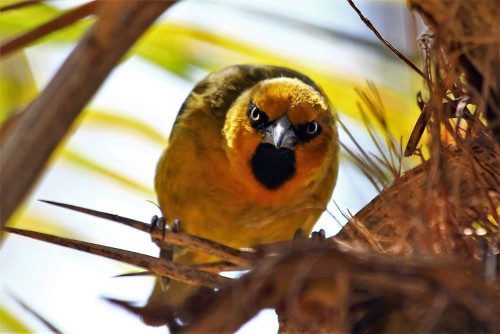Merlin Rocket Engines

Merlin rocket engines
More Posts from Eggxecutive-dysfunction and Others


Blackish Cinclodes (Cinclodes antarcticus)
© Paulo Krieser
guys at my university I have a part time job where my sole responsibility is filling up the piano humidifaction systems with water
I literally am a piano waterer & tbh I kinda feel like I’m thriving


Galaxies and the South Celestial Pole : The South Celestial Pole is easy to spot in star trail images of the southern sky. The extension of Earth’s axis of rotation to the south, it’s at the center of all the southern star trail arcs. In this starry panorama streching about 60 degrees across deep southern skies the South Celestial Pole is somewhere near the middle though, flanked by bright galaxies and southern celestial gems. Across the top of the frame are the stars and nebulae along the plane of our own Milky Way Galaxy. Gamma Crucis, a yellowish giant star heads the Southern Cross near top center, with the dark expanse of the Coalsack nebula tucked under the cross arm on the left. Eta Carinae and the reddish glow of the Great Carina Nebula shine along the galactic plane near the right edge. At the bottom are the Large and Small Magellanic clouds, external galaxies in their own right and satellites of the mighty Milky Way. A line from Gamma Crucis through the blue star at the bottom of the southern cross, Alpha Crucis, points toward the South Celestial Pole, but where exactly is it? Just look for south pole star Sigma Octantis. Analog to Polaris the north pole star, Sigma Octantis is little over one degree fom the the South Celestial pole. via NASA

I almost forgot 😅 American Crow scribbled real fast, feather shapes are wrong and proportions are wack but it’s already tomorrow and I’m behind as is haha.
Inktober 09

Messier Craters in Stereo : Many bright nebulae and star clusters in planet Earth’s sky are associated with the name of astronomer Charles Messier from his famous 18th century catalog. His name is also given to these two large and remarkable craters on the Moon. Standouts in the dark, smooth lunar Sea of Fertility or Mare Fecunditatis, Messier (left) and Messier A have dimensions of 15 by 8 and 16 by 11 kilometers respectively. Their elongated shapes are explained by the extremely shallow-angle trajectory followed by an impactor, moving left to right, that gouged out the craters. The shallow impact also resulted in two bright rays of material extending along the surface to the right, beyond the picture. Intended to be viewed with red/blue glasses (red for the left eye), this striking stereo picture of the crater pair was recently created from high resolution scans of two images (AS11-42-6304, AS11-42-6305) taken during the Apollo 11 mission to the Moon. via NASA
a solitary worm has been seen enjoying itself on a wet sidewalk this morning



A neighbour.
-
 yesbeekeeper liked this · 1 year ago
yesbeekeeper liked this · 1 year ago -
 plaid-dragon liked this · 1 year ago
plaid-dragon liked this · 1 year ago -
 wakayume liked this · 1 year ago
wakayume liked this · 1 year ago -
 shortymolinari liked this · 2 years ago
shortymolinari liked this · 2 years ago -
 zweedsanimatiepoppetje1 liked this · 2 years ago
zweedsanimatiepoppetje1 liked this · 2 years ago -
 pizzastudentsblog reblogged this · 2 years ago
pizzastudentsblog reblogged this · 2 years ago -
 hawk400t liked this · 2 years ago
hawk400t liked this · 2 years ago -
 rocket-angel reblogged this · 2 years ago
rocket-angel reblogged this · 2 years ago -
 well-i-like-it liked this · 2 years ago
well-i-like-it liked this · 2 years ago -
 thecentroid reblogged this · 2 years ago
thecentroid reblogged this · 2 years ago -
 thecentroid liked this · 2 years ago
thecentroid liked this · 2 years ago -
 neonblack reblogged this · 2 years ago
neonblack reblogged this · 2 years ago -
 reclusive-guy liked this · 2 years ago
reclusive-guy liked this · 2 years ago -
 helloforgottenlibrary reblogged this · 2 years ago
helloforgottenlibrary reblogged this · 2 years ago -
 helloforgottenlibrary liked this · 2 years ago
helloforgottenlibrary liked this · 2 years ago -
 bashfulaliens reblogged this · 2 years ago
bashfulaliens reblogged this · 2 years ago -
 bashfulaliens liked this · 2 years ago
bashfulaliens liked this · 2 years ago -
 falcj reblogged this · 3 years ago
falcj reblogged this · 3 years ago -
 shh-k reblogged this · 3 years ago
shh-k reblogged this · 3 years ago -
 eggxecutive-dysfunction reblogged this · 3 years ago
eggxecutive-dysfunction reblogged this · 3 years ago -
 eggxecutive-dysfunction liked this · 3 years ago
eggxecutive-dysfunction liked this · 3 years ago -
 japakneeez liked this · 3 years ago
japakneeez liked this · 3 years ago -
 promethas liked this · 3 years ago
promethas liked this · 3 years ago -
 iwannaliveinadream reblogged this · 3 years ago
iwannaliveinadream reblogged this · 3 years ago -
 gayafrowitch liked this · 3 years ago
gayafrowitch liked this · 3 years ago -
 scaletta001 liked this · 3 years ago
scaletta001 liked this · 3 years ago -
 br-er-rabbit reblogged this · 3 years ago
br-er-rabbit reblogged this · 3 years ago -
 br-er-rabbit liked this · 3 years ago
br-er-rabbit liked this · 3 years ago -
 ir028cn liked this · 3 years ago
ir028cn liked this · 3 years ago -
 ebtrips liked this · 3 years ago
ebtrips liked this · 3 years ago -
 1966jc-blog liked this · 3 years ago
1966jc-blog liked this · 3 years ago -
 greatsantini69 reblogged this · 3 years ago
greatsantini69 reblogged this · 3 years ago

